Introduction to Volleyball
learn, play, dominate:
your volleyball journey starts here.
Introduction to Volleyball
What is Volleyball?
Volleyball is a team sport that involves two teams of six players separated by a net. The objective is to send the ball over the net and ground it on the opponent’s court, while preventing the same from happening on your own side. The ball is primarily volleyed (hit) with the hands or arms, but players can also use any part of their body to make contact with the ball.
Volleyball is known for its fast-paced action, requiring players to possess agility, coordination, and quick reflexes. It is a sport that demands teamwork, communication, and strategic thinking, as players must work together to execute plays and outsmart their opponents.
Objective
Two teams compete on a court divided by a net. The goal is to ground the ball on the opponent’s side while preventing them from doing the same.
Scoring
A point is earned for each rally won, regardless of which team served. This is known as the Rally Point System.
Winning
The first team to reach 25 points with a two-point lead wins a set. The match is won by the team that wins three out of five sets.
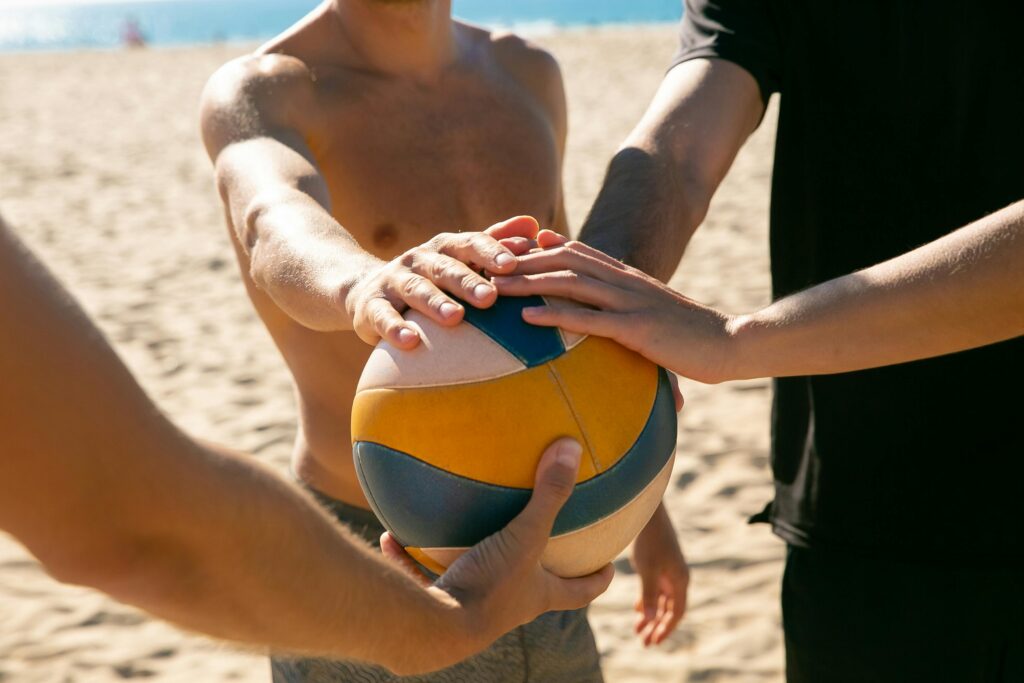
History of Volleyball
Name
The name “volleyball” was proposed by Alfred Halstead, a professor at Springfield College, who observed the “volleying” nature of the game. Morgan quickly adopted the name, and the sport’s popularity soared across schools, playgrounds, and military bases nationwide.
Origins
In 1895, in the heart of a YMCA gymnasium in Holyoke, Massachusetts, William G. Morgan, the physical director, sought a less strenuous alternative to basketball for his businessmen members. Blending elements of basketball, baseball, tennis, and handball, he crafted “mintonette,” a game designed for indoor play and moderate physical exertion.
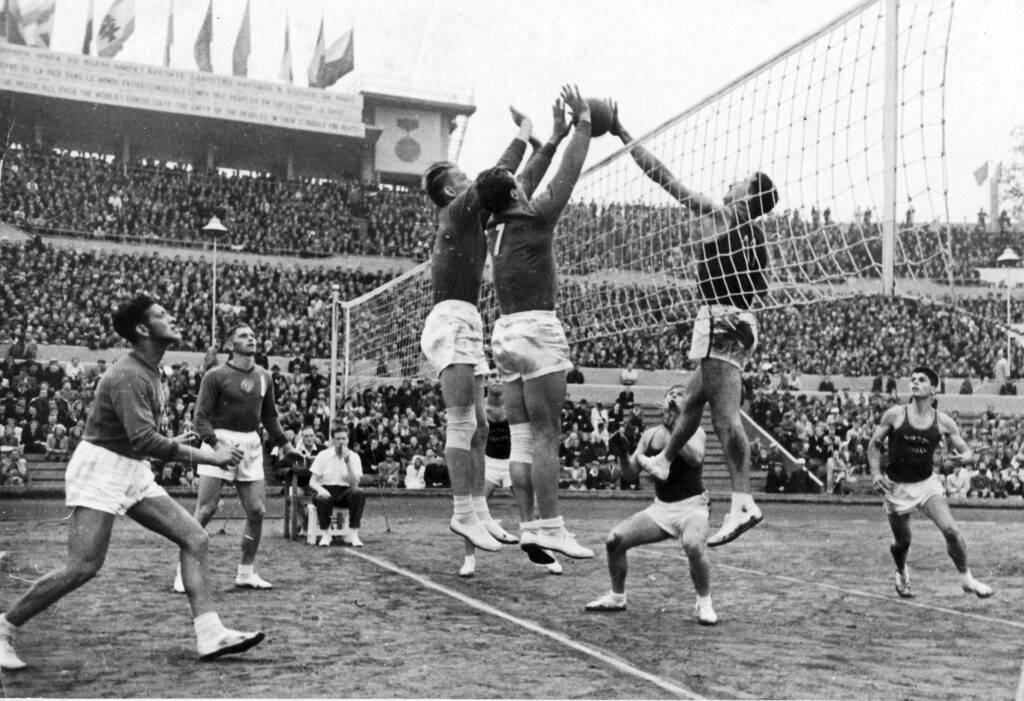
Growth and Popularity
Expansion beyond America
During World War I, volleyball’s reach extended beyond American borders as American troops introduced the game to Europe. The enthusiasm for volleyball spread rapidly, leading to the formation of national organizations and the establishment of the Fédération Internationale de Volley Ball (FIVB) in 1947.
World Championship and First Olympics
The first men’s World Championship was held in 1949, followed by the inclusion of women’s volleyball in 1952, solidifying the sport’s global presence. The 1964 Tokyo Olympics marked volleyball’s debut on the grandest sporting stage, captivating audiences worldwide with its athleticism and strategic depth.
Powerhouses
Throughout its history, volleyball has seen various countries rise to dominance. Soviet teams achieved remarkable success in the mid-20th century. Later, nations like Brazil, Cuba, Japan, and the United States emerged as powerhouses, showcasing their unique styles and strategies.
Beach Volleyball Emergence
The evolution of volleyball continued with the emergence of beach volleyball, a dynamic and exciting variation played on sand courts. Its inclusion in the 1996 Atlanta Olympics further boosted the sport’s popularity, attracting a new generation of athletes and fans.
Rules of the Game
Court and Equipment
Dimensions
The playing court is an 18m x 9m rectangle surrounded by a minimum 3m free zone on all sides.
Zones
The front zone is the area between the center line and the attack line. The service zone is the area behind each end line. The substitution zone is located behind the attack line, extending to the scorer’s table.
Net Height
2.43m for men and 2.24m for women.
Lines
All lines are 5cm wide and should be a light color that contrasts with the floor. The boundary lines include two side lines and two end lines. A center line runs under the net, dividing the court in half. The attack line, 3m from the center line, defines the front zone.
Ball
Spherical, made of leather or synthetic leather, with a circumference of 65-67cm and a weight of 260-280g.
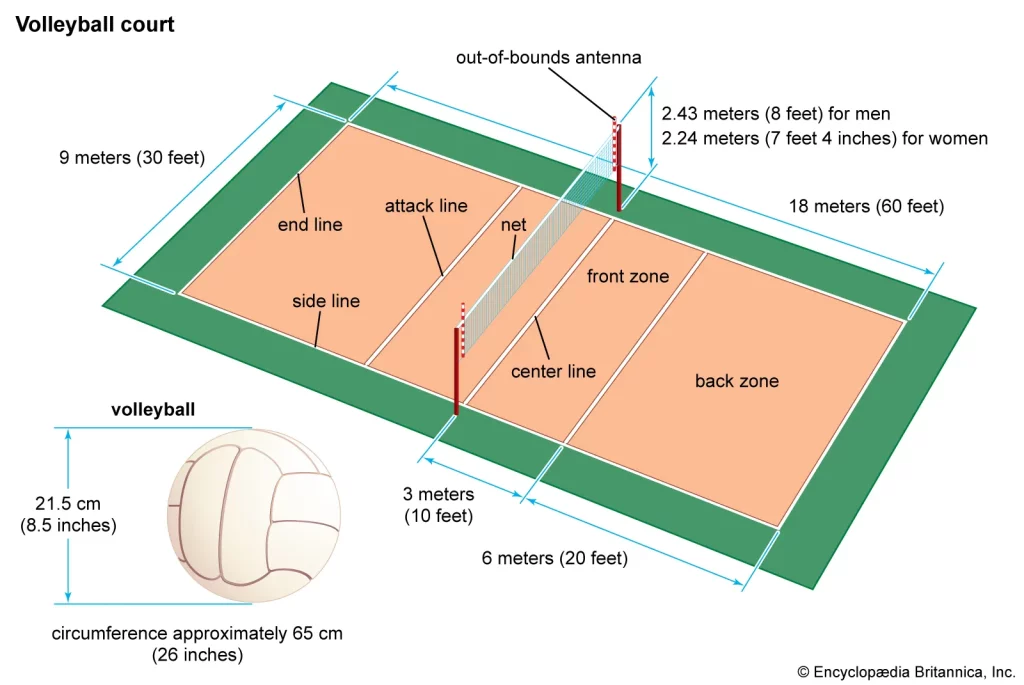
Players and Positions
Team Size
Each team consists of six players on the court at a time, with up to six substitutes.
Position
Three front-row players (left, center, right) and three back-row players (left, center, right).
Rotation
Players rotate clockwise after each side out (when the receiving team wins the right to serve).
Team Captain
One player is designated as the captain and represents the team during the toss and when communicating with the referees.
Libero
A specialized defensive player who wears a different colored uniform and can replace any back-row player without counting as a substitution. The libero cannot serve or attack the ball above the net.
Coaching Staff
A team can have one coach and up to two assistant coaches.
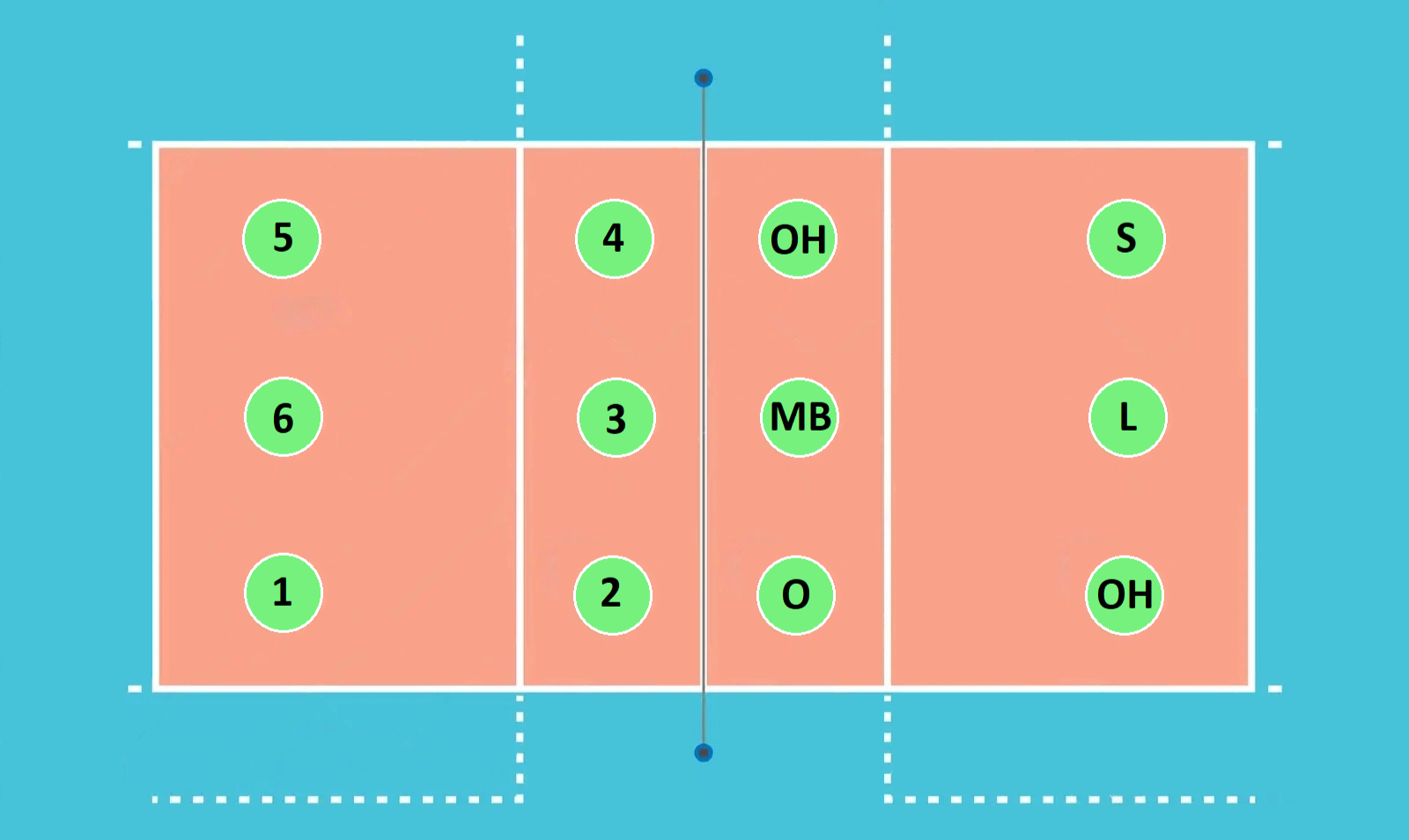
Gameplay
Service
The back-right player initiates each rally by serving the ball over the net.
Team Hits
A team can touch the ball up to three times (not including blocks) before sending it back over the net.
Playing the Ball
Each team can hit the ball up to three times (not including blocks) before returning it over the net. The can can touch any part of the body as long as the contacts are simultaneous
Attack Hit
An attack hit can be performed by any player, but back-row players must jump from behind the attack line
Blocking
Only front-row players can block. A block does not count as one of the team’s three hits.
Rules and Regulations
Faults
- Four Hits: A team hits the ball four times before returning it.
- Catch: The ball is caught or thrown rather than hit.
- Double Contact: A player hits the ball twice in succession.
- Net Violation: Touching the net during play (except during a block).
- Foot Fault: Stepping on or over the line during a serve.
- Positional/Rotational Fault: Players are not in their correct positions when the ball is served.
Interruptions
Time-outs and substitutions are the only regular game interruptions.
Delays
Delaying the game can result in warnings and penalties.
Misconduct
Unsportsmanlike behavior can result in penalties, expulsion, or disqualification.
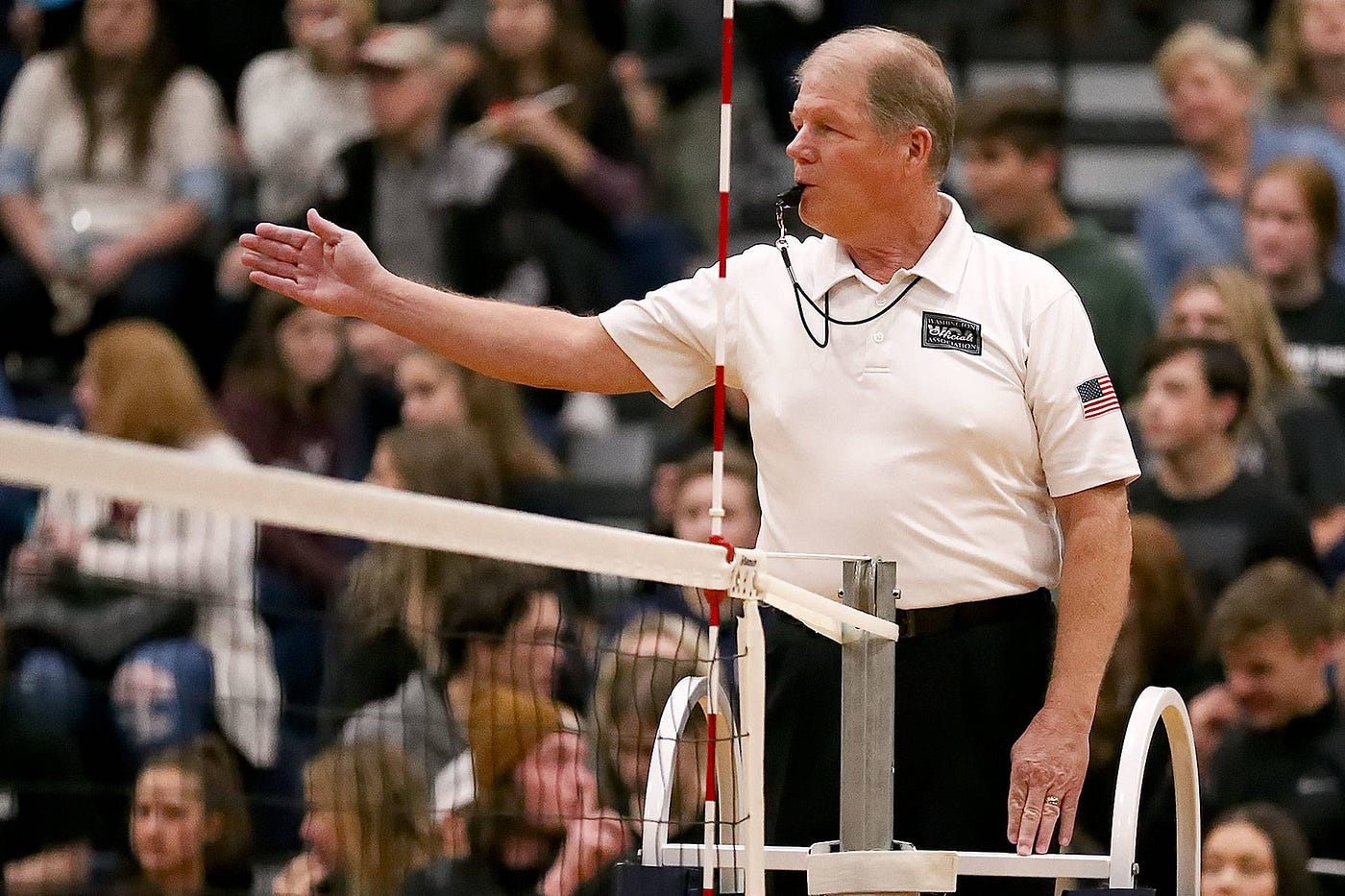
Officiating
First Referee
Has the final say on all decisions and uses hand signals to indicate faults and other calls.
Second Referee
Assists the first referee and focuses on actions at the net and substitutions.
Challenge Referee
In FIVB, World and Official Competitions, oversees the video challenge process.
Line Judges
Use flags to signal if the ball is in or out and other line violations.
Scorer
Keeps track of the score, substitutions, and time-outs.
Essential Volleyball Skills
The Serve
The serve is the initial action that puts the ball into play. It is performed from behind the end line and aims to send the ball over the net into the opponent’s court. There are different types of serves, including:
- Underhand Serve: A basic serve often used by beginners, involving an underhand swing to propel the ball.
- Overhand Serve: A more powerful serve executed with an overhand motion, often resulting in a faster and more challenging serve for the opposing team.
- Jump Serve: An advanced serve where the player tosses the ball high, jumps, and hits it with maximum force while in the air.
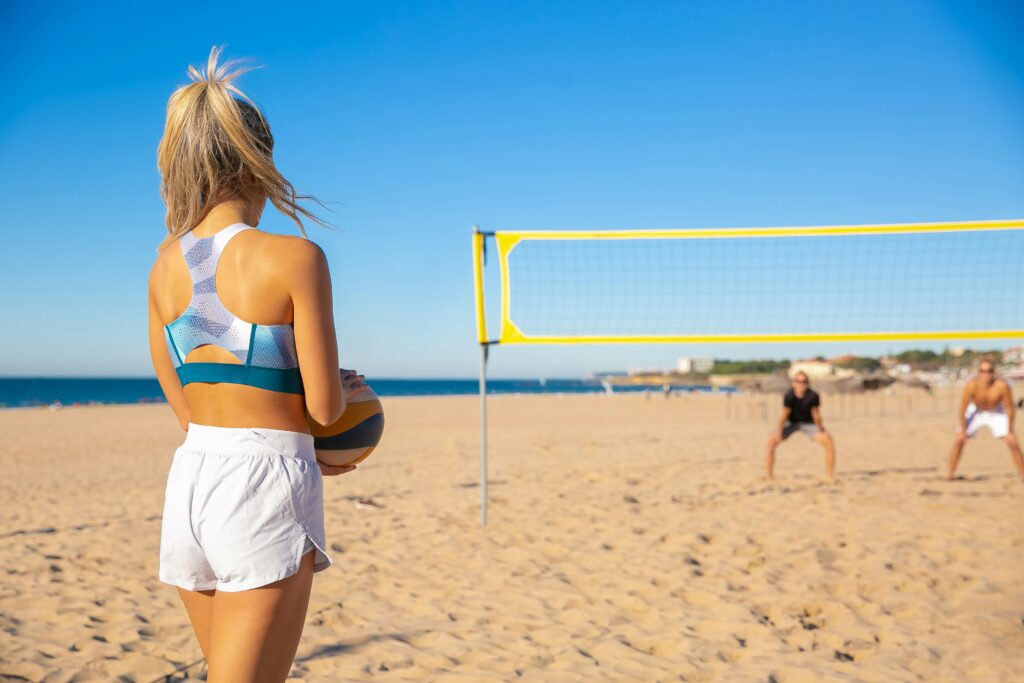
The Pass
The pass, also known as a bump, is the primary skill used to receive the serve or any attack from the opposing team. It involves using the forearms to create a platform and redirect the ball in a controlled manner to a teammate, typically the setter.
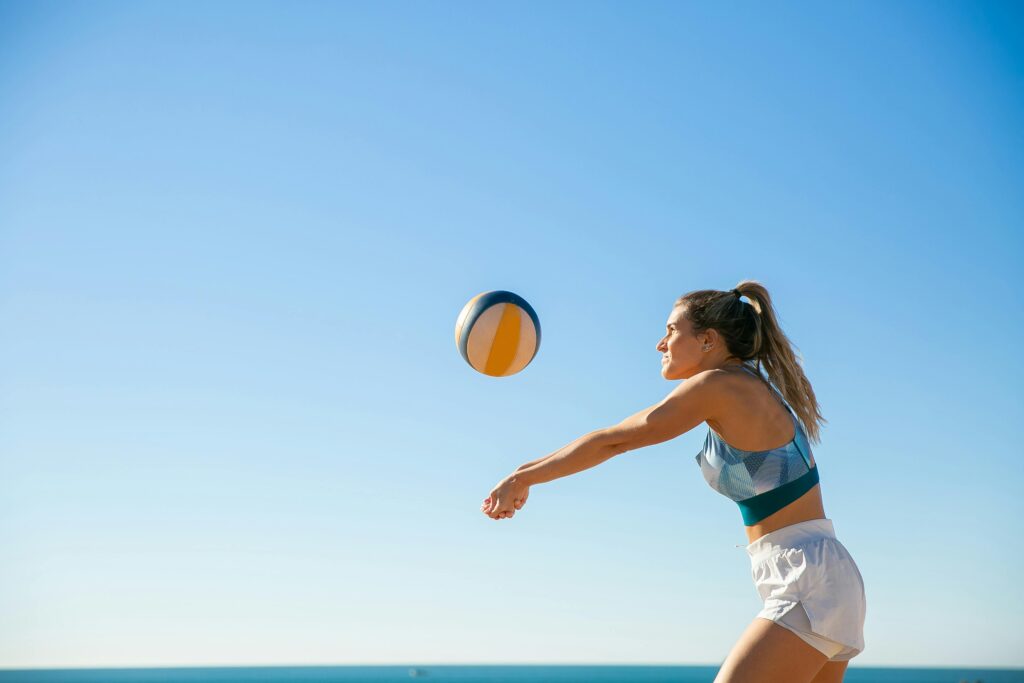
The Set
The set is a skillful maneuver that prepares the ball for an attack. The setter usually receives the pass and uses their fingertips to loft the ball in a precise arc, setting it up for an attacker to spike. The set’s accuracy and placement are crucial for a successful attack.
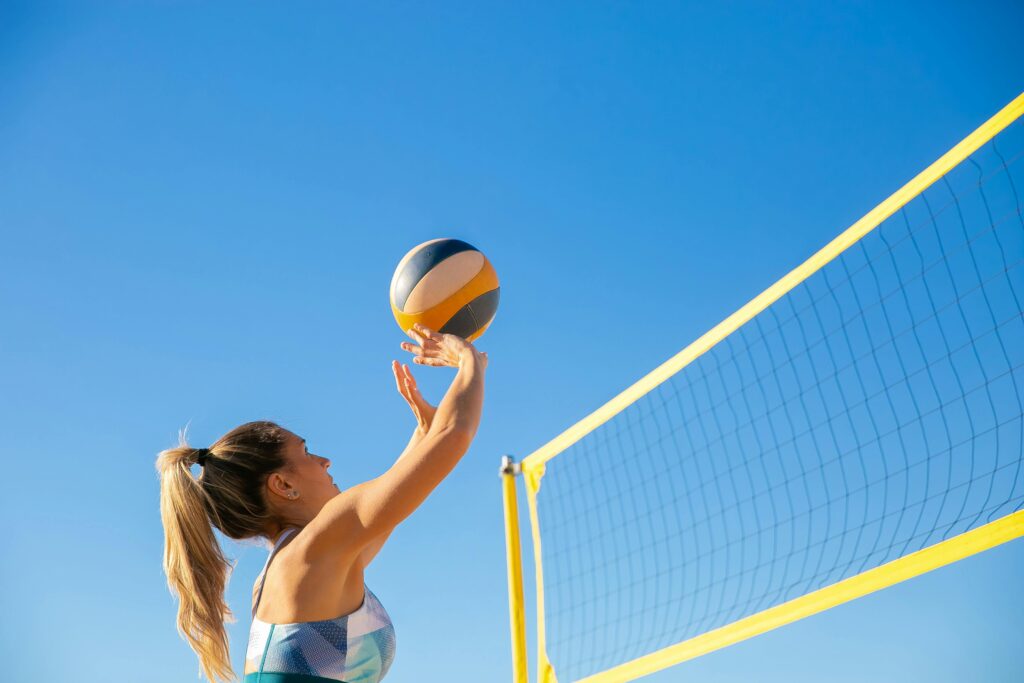
Attacking Techniques
Attacking techniques aim to send the ball forcefully into the opponent’s court, making it difficult to defend. The most common attacking techniques are:
- Tip: A deceptive shot that involves lightly tapping or pushing the ball over the net, often catching the opposing team off guard.
- Spike: A powerful overhand hit where the player jumps and strikes the ball with a downward trajectory, aiming to ground it on the opponent’s side.
- Roll Shot: An attack where the hitter contacts the ball with an open hand, causing it to spin or “roll” over the block and land softly on the opponent’s court.
- Tooling the Block: A strategic attack where the hitter aims to hit the ball off the opposing blockers’ hands, causing it to deflect out of bounds or become difficult for the defense to recover.
- Hitting High Hands: An aggressive attack where the hitter aims for the top of the blockers’ hands, using their height and power to send the ball over the block and into the court.

Blocking
Blocking is a defensive skill performed at the net to intercept the opponent’s attack. Players jump and extend their arms above the net, forming a wall to deflect the ball back into the opponent’s court or slow it down for easier defense.
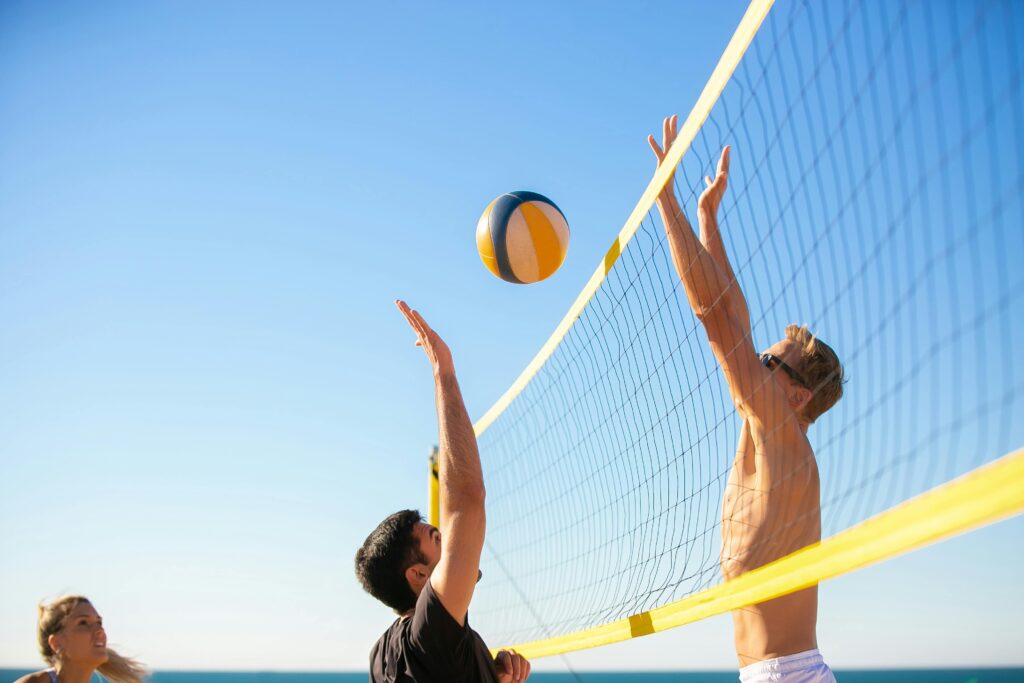
Digging
Digging is another crucial defensive skill used to prevent the ball from touching the ground on your side of the court. It often involves diving or sprawling to save a hard-driven ball, typically after an attack or a block.
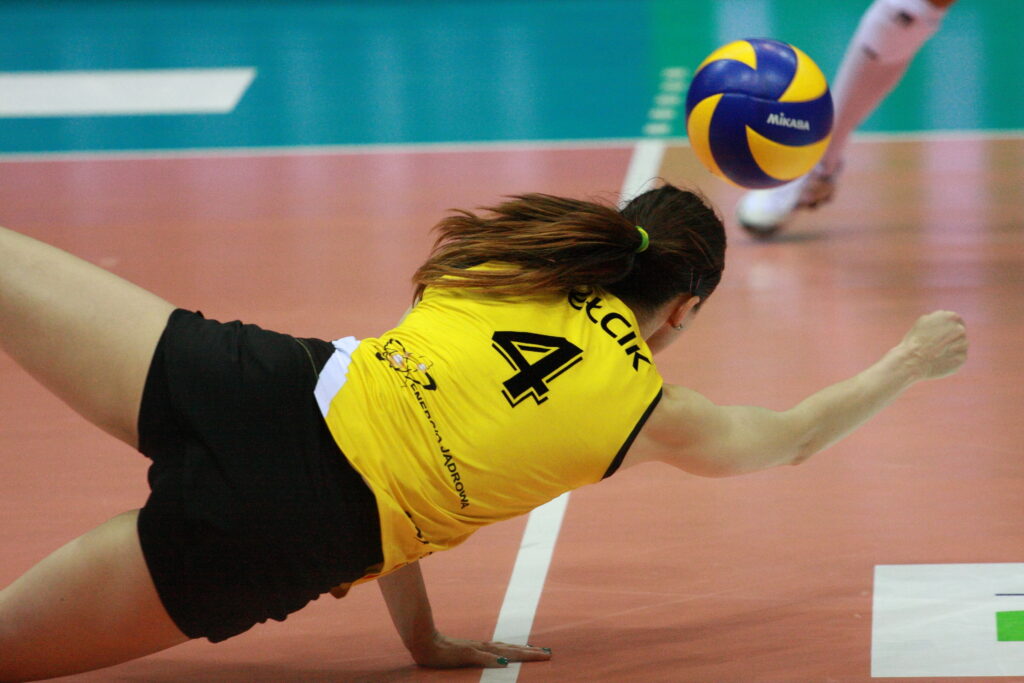
Volleyball as a Team Sport: Player Specialization and Positions
While individual skills are essential, volleyball thrives on teamwork and collaboration. Each player on the court has a specific role and position, and understanding these roles is crucial for a team’s success.
Setters
The setter is the playmaker, responsible for orchestrating the team’s offense. They typically receive the second contact and set the ball for an attacker to spike. Setters need excellent hand-eye coordination, decision-making skills, and the ability to read the game.
Outside Hitters / Left Side Hitters
These players are the primary attackers, responsible for scoring the majority of the team’s points. They usually attack from the left side of the court and need to be powerful jumpers with strong hitting skills.
Opposite Hitters / Right Side Hitters
Opposite hitters attack from the right side and often play a key role in both offense and defense. They need to be versatile players with good blocking and hitting abilities.
Middle Blockers
Middle blockers are primarily responsible for blocking the opponent’s attacks at the net. They need to be tall, athletic, and have good timing and anticipation.
Liberos
The libero is a specialized defensive player who wears a different colored jersey and focuses on receiving serves and digging. They cannot attack or block and are known for their quick reflexes and agility.
Common Formations (4-2, 6-2, 5-1)
Volleyball teams utilize different formations, which dictate the number of setters and hitters on the court at any given time. The most common formations include:
4-2 Formation
This formation features four hitters and two setters. It is often used by beginner or younger teams as it is relatively simple to implement.
6-2 Formation
In a 6-2, all six players rotate through the front row and have the opportunity to attack. There are two designated setters who set from the back row.
5-1 Formation
The 5-1 is the most common formation at higher levels of play. It has five hitters and one setter. The setter sets from the back row, and when they rotate to the front row, another player takes on the setting responsibilities.
This guide provides a basic overview of indoor volleyball. For a more in-depth understanding, please refer to the official FIVB rulebook.